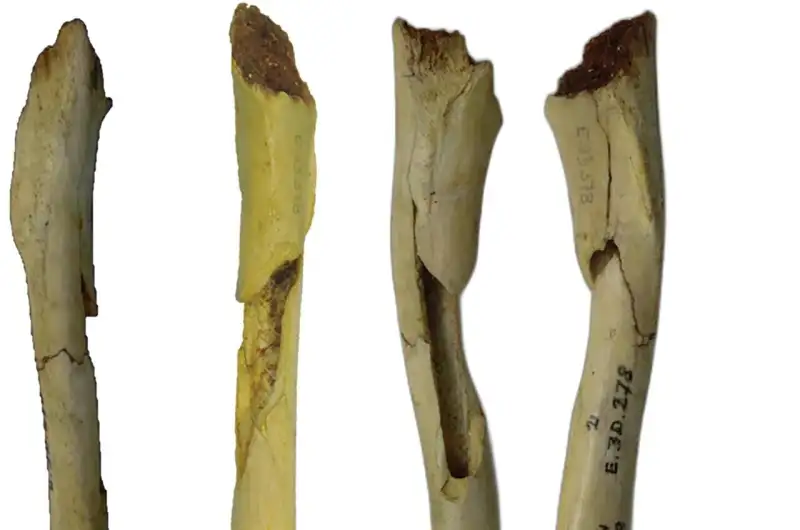A recent study conducted by the Human Evolutionary Biology group at UPV/EHU sheds light on an intriguing find. During an excavation led by Jesus Altuna in 1985 at Erralla cave in Zestoa, Gipuzkoa, an almost complete humerus bone from a canid species was discovered. At the time, it was challenging to determine which specific canid species the bone belonged to.
Now, under the leadership of Professor Conchi de la Rúa, the research team has conducted a comprehensive analysis of the bone remains. By employing morphological, radiometric, and genetic techniques, they have successfully identified the species genetically as Canis lupus familiaris, the domestic dog.
To determine the age of the humerus bone, carbon-14 dating was performed using particle accelerator mass spectrometry. The results indicate that the bone is approximately 17,410 to 17,096 calibrated years Before Present (cal. BP). This places the Erralla dog in the Magdalenian period of the Upper Paleolithic, making it one of the oldest known domestic dogs in Europe.
Interestingly, the mitochondrial lineage of the Erralla dog aligns with that of other Magdalenian dogs studied so far. This lineage is believed to have originated during a period of cold climate, known as the Last Glacial Maximum, which occurred around 22,000 years ago in Europe.
Conchi de la Rúa suggests that these findings challenge the existing understanding of wolf domestication. The presence of the Erralla dog in western Europe indicates that interactions between Paleolithic hunter-gatherers and wild species, such as wolves, may have been more significant during glacial refuge areas like the Franco-Cantabrian region. This suggests the possibility of earlier wolf domestication than previously proposed.
The research results were published in the Journal of Archaeological Science: Reports.
Source: University of the Basque Country
